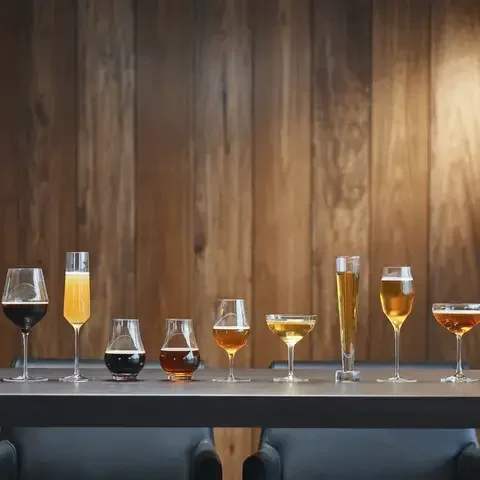Origin Pairing—What Grows Together, Goes Together
Pair beer with the cuisine of its origin. This classic pairing principle works just as well for beer as it does for wine.
“If you’re having German cuisine, drink German beer,” says Rouben. “If English food and English beer didn’t pair well, they would have changed it a long time ago.”
A classic German pilsner with bratwurst or a malty English ale with shepherd’s pie are perfect examples of this philosophy in action.
Complementary Pairings—Amplifying Flavor
Complementary pairings highlight flavors or textures that naturally align. A similar beer can emphasize the nuances of a dish, enhancing its depth.
- Light-bodied foods (like oysters or sashimi) work well with light-bodied beers such as a rice lager.
- For desserts, a porter brings out flavors like chocolate in rich cakes or pastries.
“I love dessert,” says Rouben, pointing to Moody Tongue’s famed 12-layer German chocolate cake. “Pair it with a chocolate beer to enhance the layers.”
Contrasting Pairings—Opposites Attract
Contrasting pairings embrace the classic rule that opposites attract. A pairing doesn’t always need to be complementary—it can be intentionally bold and unexpected.
“We have a nice Yuzu lager that showcases the tart citrus of the Yuzu that we pair with raw Shima-aji (striped bass) with sesame sauce; the sesame sauce is sweet, so there’s a really nice contrast with the tart Yuzu,” says Rouben.
Think spicy foods with crisp lagers or rich, fatty meats with bitter IPAs—pairings that cut through intensity rather than match it.
Glassware—Presentation Matters
“Wine has done an incredible job with presentation and showmanship that's laid the foundations for beer,” says Rouben.
At Moody Tongue, every beer pairing utilizes a unique glass, much like wine.
- Their Cassis beer (a black currant lambic) is served in a Bordeaux glass because black currant is a key characteristic of Bordeaux wines.
- The Cherry Oud Bruin, aged in sherry casks, is served in a bulbous Burgundy glass to allow its layers of flavor to open up.
Using the right glass shape enhances aromatics and taste, just as it does for wine.















